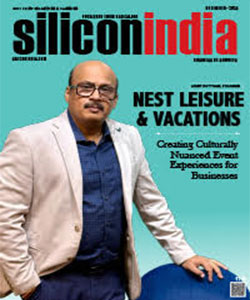Weaving a Brand's Story: Essential Narrative Crafting in the Digital Age

Establishing a strong and genuine brand presence in the fast-paced digital age, where the online marketplace is flooded with competition, has become crucial. Numerous opportunities exist in the digital environment to engage your audience and create a unique identity for your brand. Brand storytelling is one of the most effective tools you can use. The importance of telling a brand's story and how it is essential in the current digital era will be covered in detail in this article. Consumers in an information-overloaded world are looking for more than just goods and services; they also want stories that reflect their values and meaningful connections. By creating these narratives with skill, you can give your brand a personality, a goal, and a human touch that goes beyond marketing. In this context, we will explore the key elements of compelling brand narratives, the emotional resonance they create, and the lasting impact they can have in an increasingly competitive digital marketplace.
How Storytelling Helps Forge Emotional Bonds with Your Audience
![]()
Making emotional connections with your audience through storytelling is a powerful strategy. Brand storytelling uses this innate desire for narratives to its advantage, making it a powerful tool for fostering emotional connections. A skillfully crafted story enthralls your audience, evoking various feelings and cultivating a strong sense of belonging. Customers are drawn to your brand not only as customers but also as devoted enthusiasts who zealously promote it when they can relate to your company's narrative. By becoming a bridge that connects people and brands through similar experiences and emotions, storytelling moves beyond simple communication.
One prominent Indian brand that excels in leveraging storytelling to forge emotional bonds with its audience is Tata Motors. Through their "DeshKeTruck" campaign, Tata Motors artfully weaves narratives around the pivotal role their trucks play in shaping India's infrastructure and economy. These stories spotlight the dedication and hard work of the truck drivers, portraying them as unsung heroes. By humanizing their products and emphasizing their impact on society, Tata Motors showcases the quality of their vehicles and evokes a deep sense of pride and connection among their audience. This emotional resonance fosters a loyal customer base and engenders a positive brand perception.
Transcending Traditional Advertising
Consumers in the digital age are skeptical of traditional advertising because they want real, personal connections with the brands they support. A compelling alternative that allows brands to communicate their message in an honest and relatable way is brand storytelling. By fostering a stronger, more personal connection with the audience, this strategy goes beyond the constraints of conventional advertising. Brands can engage and enthrall their customers by creating stories that connect with them on a human level. This leads to the developing of enduring relationships based on trust and shared experiences. This evolution highlights the importance of narrative in contemporary marketing strategies and represents a sea change in how brands interact with their audience.
Leveraging Social Media and Content Marketing
The effective tools for brand storytelling are social media and content marketing. These digital channels enable brands to tell their stories to various audiences while encouraging interaction and engagement. Brands can carefully craft and convey their stories through multiple media, such as blog posts, videos, images, and real-time social updates, resulting in a dynamic and visually compelling narrative. Through a global connection with consumers and a strategy that transcends geographic boundaries, brands can forge the relationships and emotional ties important in today's marketing environment.
Tools and Resources for Effective Brand Storytelling
Creating a compelling narrative for a brand requires various tools and resources, each with a specific function. Brands can produce attractive infographics and graphics using tools like Canva and Adobe Creative Suite to enhance their stories visually. Creating captivating videos that appeal to audiences is made easier with the help of video editing programs like Adobe Premiere Pro and Final Cut Pro. Stories can be shared on websites and blogs using user-friendly platforms provided by content management systems like WordPress. Hootsuite and Buffer are two examples of social media scheduling tools that assist in sustaining a consistent presence across numerous platforms. Google Analytics and other analytics tools offer vital information about audience engagement that helps inform content strategy. When strategically employed, these tools enable brands to craft stories that leave an impression and forge deep connections with their target audience.
The Impact of User-Generated Content
![]()
The use of user-generated content in brand storytelling has increased significantly. Customers who write reviews, create content about your goods or services or share their interactions with your brand on social media give your brand's narrative more authenticity. To build a base of devoted brand advocates to promote user-generated content. Since user-generated content is created by actual customers rather than the brand itself, it is frequently considered more reliable and relatable. It fosters a sense of community, converting clients into brand advocates and developing an exciting and compelling story that appeals to a larger audience. The perception of a brand and customer loyalty may be significantly impacted by this natural and authentic approach to storytelling.
Adapting to Evolving Trends
In the world of social media, for instance, Instagram's launch of Reels and other social and entertainment platforms' rapid ascent highlighted the significance of short-form video content. The brands that adopted these trends quickly and incorporated them into their storytelling were successful. They increased their online presence and engaged a younger, more tech-savvy audience by adapting to changing trends. A brand's adaptability is highlighted by this proactive approach to staying current, ensuring the brand maintains a compelling and relatable presence in the digital space. Adapting to change is essential for long-term success in today's dynamic environment.
Future Prospects of Digital Brand Storytelling
These innovations will enable brands to create immersive, interactive narratives, allowing consumers to enter the brand's world. For example, AR can enhance in-store experiences, while VR can transport users to new environments related to a brand's message. Moreover, the growth of AI-powered content generation will enable brands to personalize their stories on a scale never seen before, delivering tailored experiences to individual consumers. In this future landscape, those who invest in cutting-edge technologies and harness the power of data analytics to refine their storytelling strategies will not only captivate their audience but also stay at the forefront of digital marketing, ultimately ensuring a competitive edge in the evolving world of brand storytelling.
In conclusion, brand storytelling is a crucial component of today's digital marketplace because it helps to create deep connections between companies and their customers. By going beyond traditional advertising, utilizing social media and content marketing, and incorporating user-generated content, you can create a genuine narrative that appeals to your target audience. To keep a lead in digital brand storytelling, take advantage of the tools at your disposal, track your progress, and quickly adjust to changing trends. The future appears bright, and those skilled in this trade will prosper in the constantly evolving digital environment.
Read More News :
HCL Technologies logs Rs 3,832 crore payment of interim
French brand Thomson set to launch laptops across price points in India



